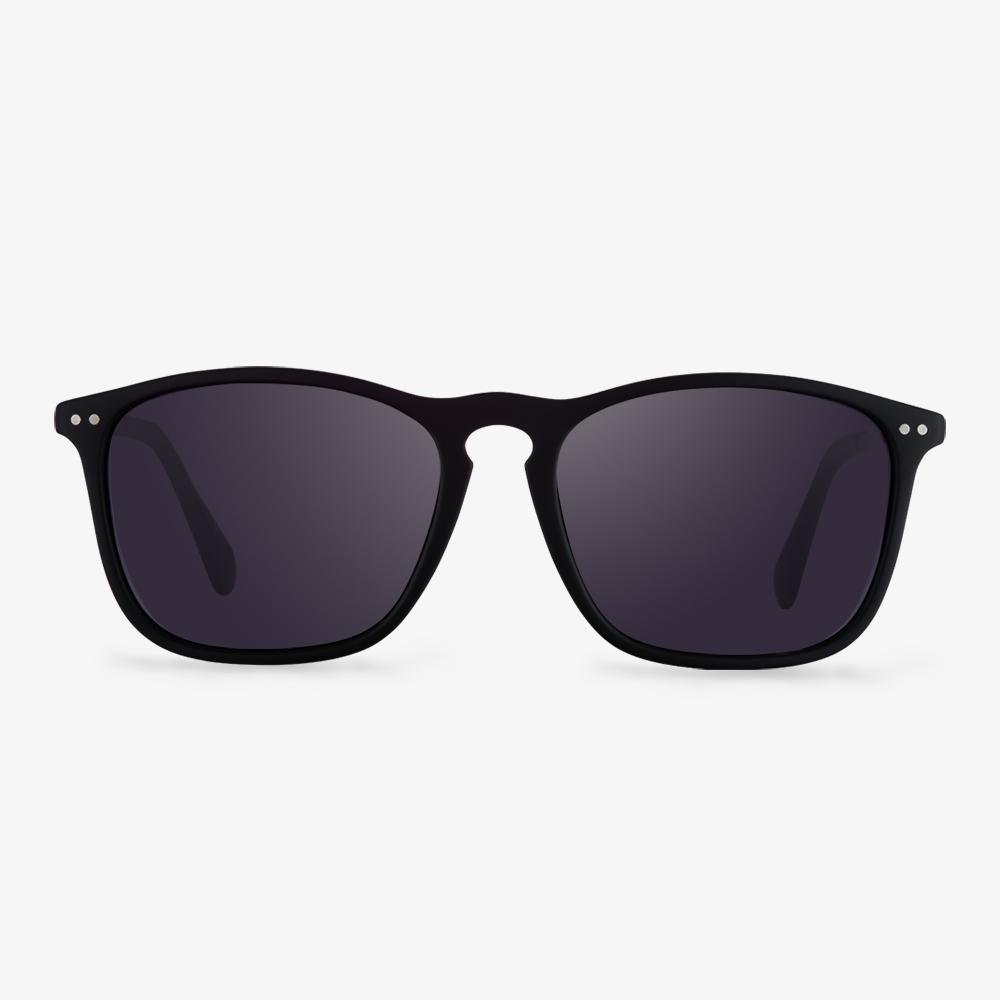Transition Lenses Problems
Here, we will show you some common transition lenses problems.
Transition lenses are typically embedded with photo-sensitive chemicals or coated with similar films that produce the shading effect when exposed to light. This process makes the lens more expensive to manufacture and focuses on prescription glasses, thus raising the transition glasses cost. The transition lenses cost may be twice of the regular glasses lenses.
When you are driving with the transition glasses, they will fail to work. Car windshields typically come standard with anti-glare effects or films and laminates that break up some of the direct sunlight that enters the vehicle. This will reduce the transition lens effects, causing them to register a non-lit condition when the direct sunlight can actually be very bright.
Design principle of progressive multifocal lens
For the same piece of the lens, the top is used to see far, the bottom is used to see close. The upper and lower degrees are different.
There is not a sudden change in the distance degree fixed above the lens to the near degree fixed below the lens, but a gradual transition between the two through gradual changes in refractive power, which has special benefits over common bifocals or trifocal lenses.
What is blue light?
To prevent blue light, we must first understand what blue light is. The visible light with a wavelength range of 400-500 nanometers is called blue light. The light sources used in daily LED lighting and display products, including mobile phones, flat panels, and TVs, are mostly LED light sources excited by blue light. However, not all blue light is harmful to the human body. The human eye has an extremely low tolerance to blue light radiation in the 400-440 nanometer range. When the light intensity enters this threshold, photochemical damage is likely to occur. However, blue light radiation in the range of 459-490 nanometers is essential for regulating the human body's circadian rhythm and can affect the secretion of human melatonin, which in turn has an impact on the body's biological clock, alertness, and mood.
Scientifically effective anti-blue light lenses must not only block harmful blue light but also cannot filter beneficial blue light. Most of the ineffective anti-blue light products on the market currently have two types of problems. One is that there is almost no protective effect on the blue light in the vulnerable zone of the human eye. The other is excessive protection, shielding the blue light spectrum in the beneficial band so that the blue light that is beneficial for physiological adjustment cannot enter the human eye. At the same time, the color of the lens is yellow, which is prone to color shift, aggravating visual fatigue, and even inducing the risk of myopia.
How to choose frames?
You can choose a thicker frame with the lens, and then pay attention to the temple. It is better to have a little weight, or the frame is easy to lose forward. The shape of the frame can be elliptical. If the frame is rectangular, the rim of the lens may be a little thick. Choose frame TR90 plate and the frame will be wider than ordinary alloy. Of course, if you like metal, there are now metal frames with thick frames.
Plano Lenses vs Demo Lenses
When talking about the plano lenses, demo lenses will be talked about, too. Plano lenses are different from demo lenses. Demo lenses are nothing but lenses that are fitted into the demo frames at the optical showroom and workshops. The only purpose of demo lenses is to give a realistic aesthetic of the frame to the users so that they can get an idea of how it would look with corrective lenses. However, there is also no corrective power on demo lenses.
Compared with demo lenses, plano lenses provide good quality lenses that give your protection against harmful UV rays and blue light emitted from digital screens like laptops and desktops. In addition, you can also add an anti-glare coating to the plano glasses.
Why do so many people like rimless glasses?
Rimless glasses are lighter because they have no frame and are made of memory titanium alloy, which greatly relieves the pressure on the bridge of the nose and eyes and makes them more comfortable to wear. And because there are no frames to tie them down, the wearer has a wider view. Rimless glasses style is more diverse and stylish. They are rich in color, so loved by young eyeglasses.
How to drive at night with glasses?
Far-light is easy to cause blind spots for drivers of opposite vehicles, and it is possible to cause traffic accidents when driving in the cities. In the process of driving, if the driver encounters the situation that a high beam disrupts the line of sight, can turn the eye in the left or right direction, avoid light sources, and allow your eyes to gradually adapt to the other person's light source. If you can't see clearly, slow down or even pull over.











































